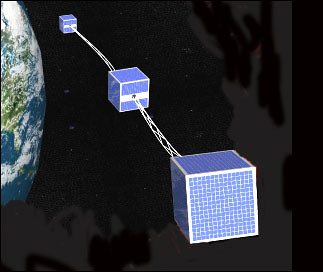BlackBerry NOC Down
Wednesday, April 18th, 2007
Chuck Scarborough used to live down the street from me in Bronxville years ago. Last night I watched him tell me my BlackBerry‘s not working. Neither is anybody’s in North America, according to Computerworld:
The BlackBerry wireless e-mail service from Research In Motion Ltd. appears to have suffered a widespread outage that started last night in the U.S.
Customers on the BlackBerry Forums discussion board complained of having no service starting at about 5.15 p.m. PDT yesterday.
Callers to the BlackBerry U.S. technical support line were still greeted with the following message early this morning: "We are currently experiencing a service interruption that is causing delays in sending or receiving messages. We apologize for the inconvenience and will provide updates as soon as they become available."
New York television news channel NewsChannel4 reported last night that the problem affected "all users in the Western hemisphere."
However, comments from operators in Asia and Europe, as well as postings to the BlackBerry Forums, suggested that the problem may be limited to North America.
"Officials with RIM said they are trying to reset the system and told NewsChannel4 that they are concerned that the backlog of data, which will rush through when it comes back on line, could cause a bigger problem," the news channel reported on its Web site.
RIM officials advised people who use Blackberry as a major way of communications to make back-up plans, the channel reported.
A RIM official contacted in France was unaware of the problems, and said she had received messages sent to her BlackBerry as normal. Other RIM officials did not return calls seeking comment.
The outage may have been cause by one of RIM’s Network Operating Centers (NOC) going down, according to Emma Mohr-McClune, principal analyst with Current Analysis Inc. "This has happened before," she said.
RIM operates two NOCs, both located in Canada, according to Mohr-McClune. The company has considered locating additional NOCs outside of Canada, she said.
Companies that provide BlackBerry service connect their mail servers to a BlackBerry Enterprise Solution (BES) server located on their premises, which in turn is linked to one of RIM’s NOCs, according to Mohr-McClune. "All data slides to Canada and back," she said.
RIM may have been fortunate that the outage began at about 5 p.m. Pacific Time, because it would have been after the busiest part of the U.S. work day. Engineers were likely scrambling through the night to bring the service back online before the start of the U.S. workday today.
Other parts of the world appeared to have been unaffected. A representative for Taiwan Mobile Ltd., RIM’s BlackBerry partner for the island, said the problem is limited to North America, and that users would not be affected unless they are sending or receiving e-mail through a BlackBerry server there.
"RIM has not communicated with Taiwan Mobile about when this problem might be fixed," said the representative, April Hong.
NTT DoCoMo Inc. in Tokyo said its BlackBerry users in Japan were also unaffected. And In Europe, a spokesman for T-Mobile Deutschland GmbH was unaware of any problems, and Blackberry users in Germany and France reported no interruption of service.
The problems come at a time of continued rapid growth for the company, based in Waterloo, Ontario. It added 1.02 million subscribers in the quarter ended March 3, for a total of approximately 8 million BlackBerry subscribers worldwide. Revenue for the quarter was $930.4 million, up 66% from a year earlier. Net income for the quarter before adjustments was $187,928, the company said.
Wish they had built-in satellite connectivity. Thuraya phones have it.
 Here’s
Here’s

 A Halifax man who asserted that his condo board’s ordering him to take down his satellite dish amounted to discrimination has had his case dismissed by the Nova Scotia Human Rights Commission, the
A Halifax man who asserted that his condo board’s ordering him to take down his satellite dish amounted to discrimination has had his case dismissed by the Nova Scotia Human Rights Commission, the 



